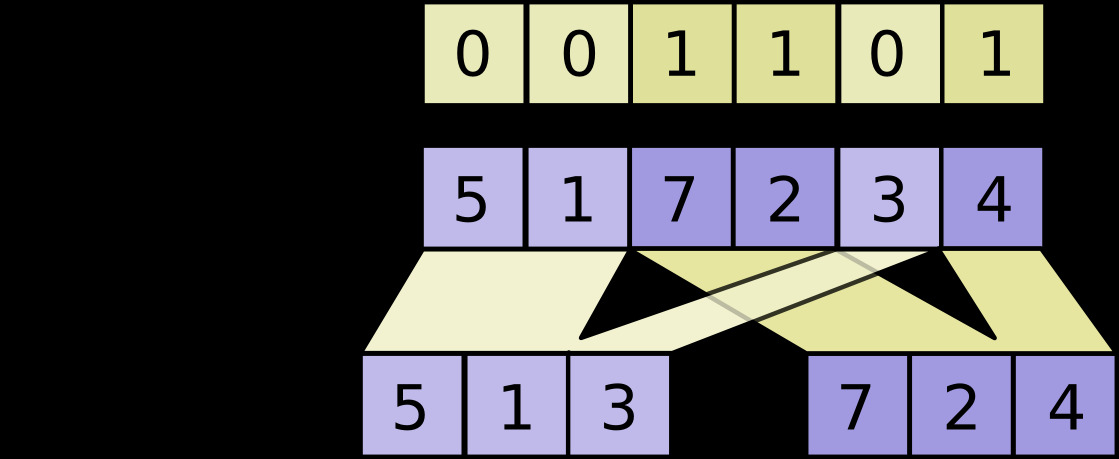使用來自 partitions 的索引將 data 劃分為 num_partitions 張量。
用法
tf.raw_ops.DynamicPartition(
data, partitions, num_partitions, name=None
)參數
-
data一個Tensor。 -
partitionsTensor類型為int32。任何形狀。[0, num_partitions)範圍內的索引。 -
num_partitionsint即>= 1。要輸出的分區數。 -
name操作的名稱(可選)。
返回
-
與
data具有相同類型的num_partitionsTensor對象的列表。
對於大小為 partitions.ndim 的每個索引元組 js ,切片 data[js, ...] 成為 outputs[partitions[js]] 的一部分。帶有partitions[js] = i的切片按照js的字典順序放置在outputs[i]中,outputs[i]的第一個維度是partitions中的條目數等於i。詳細地,
outputs[i].shape = [sum(partitions == i)] + data.shape[partitions.ndim:]
outputs[i] = pack([data[js, ...] for js if partitions[js] == i])data.shape 必須以 partitions.shape 開頭。
例如:
# Scalar partitions.
partitions = 1
num_partitions = 2
data = [10, 20]
outputs[0] = [] # Empty with shape [0, 2]
outputs[1] = [[10, 20]]
# Vector partitions.
partitions = [0, 0, 1, 1, 0]
num_partitions = 2
data = [10, 20, 30, 40, 50]
outputs[0] = [10, 20, 50]
outputs[1] = [30, 40]有關如何合並分區的示例,請參閱dynamic_stitch。

相關用法
- Python tf.raw_ops.DynamicStitch用法及代碼示例
- Python tf.raw_ops.DecodeGif用法及代碼示例
- Python tf.raw_ops.DepthToSpace用法及代碼示例
- Python tf.raw_ops.DepthwiseConv2dNative用法及代碼示例
- Python tf.raw_ops.DeserializeManySparse用法及代碼示例
- Python tf.raw_ops.Dilation2D用法及代碼示例
- Python tf.raw_ops.Dequantize用法及代碼示例
- Python tf.raw_ops.DeserializeSparse用法及代碼示例
- Python tf.raw_ops.DataFormatVecPermute用法及代碼示例
- Python tf.raw_ops.DiagPart用法及代碼示例
- Python tf.raw_ops.DecodeProtoV2用法及代碼示例
- Python tf.raw_ops.Diag用法及代碼示例
- Python tf.raw_ops.TPUReplicatedInput用法及代碼示例
- Python tf.raw_ops.Bitcast用法及代碼示例
- Python tf.raw_ops.SelfAdjointEigV2用法及代碼示例
- Python tf.raw_ops.BatchMatMul用法及代碼示例
- Python tf.raw_ops.OneHot用法及代碼示例
- Python tf.raw_ops.ResourceScatterNdSub用法及代碼示例
- Python tf.raw_ops.ReadVariableXlaSplitND用法及代碼示例
- Python tf.raw_ops.GatherV2用法及代碼示例
注:本文由純淨天空篩選整理自tensorflow.org大神的英文原創作品 tf.raw_ops.DynamicPartition。非經特殊聲明,原始代碼版權歸原作者所有,本譯文未經允許或授權,請勿轉載或複製。
